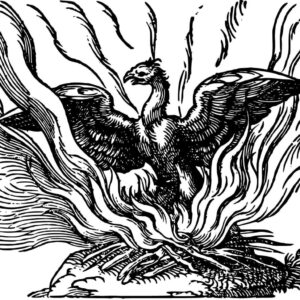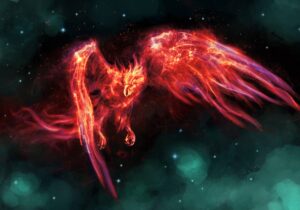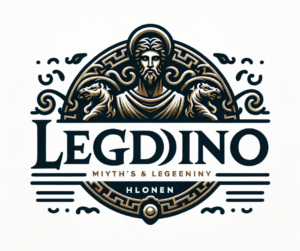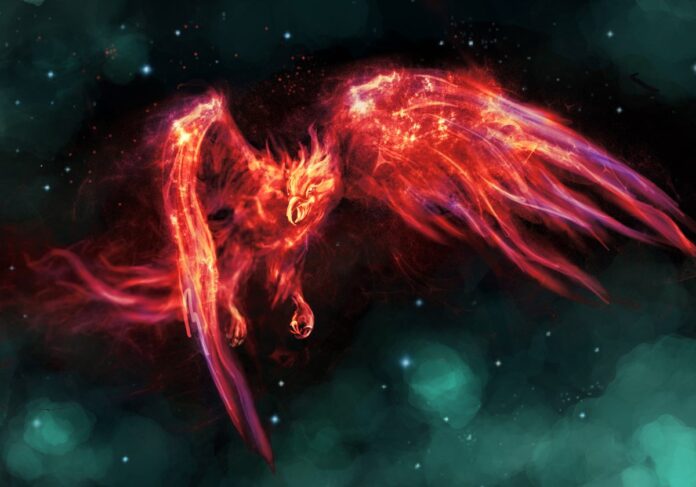
The phoenix, a mythological bird that symbolizes rebirth and renewal, has fascinated cultures around the world for centuries. Its legendary ability to rise from its ashes after death and be reborn anew encapsulates themes of resilience, transformation, and the eternal cycle of life and death. This timeless symbol transcends cultural boundaries, appearing in ancient mythology, literature, and art across various civilizations.
Origins of the Phoenix Myth
The earliest accounts of the phoenix can be traced back to ancient Egypt. Known as the Bennu bird, it was associated with the sun god Ra and represented the concept of immortality. The Bennu bird was said to undergo a cyclical process of renewal, similar to the sun’s daily rise and set, symbolizing the idea of continuous life and death.
In Greek mythology, the phoenix was depicted as a majestic, colorful bird that lived for several centuries before building its own funeral pyre. After being consumed by flames, the bird would emerge from its ashes, reborn to live again. This powerful imagery of death and resurrection resonated deeply with the Greeks, who saw the phoenix as a symbol of eternal life and the cyclical nature of existence.
The Phoenix in Different Cultures
Chinese Mythology
In Chinese culture, the phoenix, known as the Fenghuang, is one of the Four Sacred Creatures and embodies the principles of yin and yang. Unlike its Western counterpart, the Fenghuang is a composite of several birds and is often associated with the empress. It symbolizes grace, virtue, and prosperity. The Fenghuang’s ability to rise from adversity aligns with the broader Chinese philosophy of balance and harmony.
Japanese Folklore
The phoenix, or Hou-ou, in Japanese folklore, shares similarities with the Chinese Fenghuang. It is a symbol of peace, fidelity, and the imperial household. The Hou-ou is said to appear only during times of peace and prosperity, serving as an omen of good fortune. This bird’s cyclical rebirth is a metaphor for the Japanese concept of “mono no aware,” an appreciation for the impermanence and transient beauty of life.
Hindu and Persian Legends
In Hindu mythology, the phoenix is akin to Garuda, the divine bird and mount of Lord Vishnu. Garuda is a symbol of power and martial prowess, often depicted as a protector against evil. Similarly, in Persian legends, the Simurgh is a large, mythical bird that purifies the land and bestows wisdom. Its ability to be reborn signifies the purification and regeneration of life.
Symbolism in Modern Contexts
Literature and Popular Culture
The phoenix’s symbolism has been adopted in modern literature and popular culture, often representing themes of transformation and resilience. In J.K. Rowling’s “Harry Potter” series, the character Fawkes, a phoenix, embodies the fight against evil and the hope of renewal. Similarly, in Suzanne Collins’ “The Hunger Games,” the protagonist Katniss Everdeen is symbolized as the “Mockingjay,” a bird that becomes a symbol of revolution and renewal.
Personal Growth and Spirituality
In contemporary spiritual practices, the phoenix represents personal growth and the capacity to overcome challenges. The bird’s cyclical death and rebirth serve as a powerful metaphor for individuals seeking to transform their lives, rise above hardships, and embrace new beginnings. This enduring symbol encourages resilience, reminding us that from the ashes of our struggles, we can emerge stronger and renewed.
The Phoenix in Art and Architecture
The phoenix has also left an indelible mark on art and architecture. Throughout history, its imagery has been depicted in various forms, from ancient murals and tapestries to modern sculptures and paintings. In many cultures, the phoenix is featured in religious and ceremonial art, symbolizing divine presence and protection.
In architecture, particularly in East Asia, the phoenix is often incorporated into the design of temples and palaces. These structures embody the themes of rebirth and renewal, reflecting the cultural significance of the phoenix as a guardian of prosperity and peace.
Conclusion
The phoenix, with its profound symbolism of rebirth and renewal, remains a powerful and timeless figure across different cultures. Its enduring presence in mythology, literature, art, and spirituality highlights humanity’s fascination with the concepts of immortality and transformation. As a symbol, the phoenix continues to inspire and remind us of our own potential for resilience and renewal in the face of life’s challenges.


















